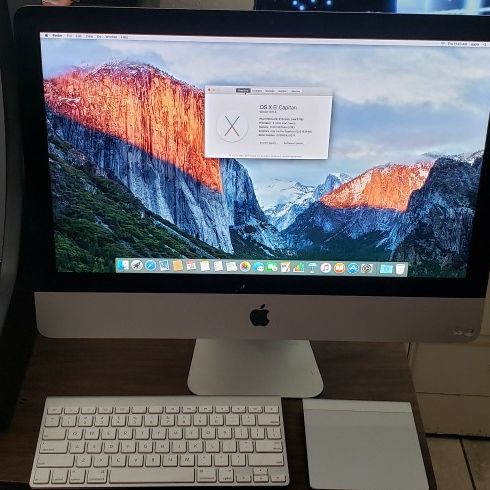
- #24 imac with retina 4.5 k display pro
- #24 imac with retina 4.5 k display plus
- #24 imac with retina 4.5 k display series
57 PPD means that a tall skinny triangle with a height equal to the viewing distance and a top angle of one degree will have a base on the device's screen that covers 57 pixels. Based on Jobs' predicted number of 300, the threshold for a Retina display starts at the PPD value of 57 PPD. One way of expressing this as a unit is pixels-per-degree (PPD) which takes into account both the screen resolution and the distance from which the device is viewed.

When introducing the iPhone 4, Steve Jobs said the number of pixels needed for a Retina display is about 300 PPI for a device held 10 to 12 inches from the eye. ( May 2023) ( Learn how and when to remove this template message) Unsourced material may be challenged and removed. Please help improve this article by adding citations to reliable sources in this section. This section needs additional citations for verification.
#24 imac with retina 4.5 k display pro
Later device versions have had additional improvements, whether an increase in the screen size (the iPhone 12 Pro Max), contrast ratio (the 12.9” iPad Pro 5th Generation, and iMac with Retina 4.5K display), and/or, more recently, PPI count (OLED iPhones) as a result, Apple uses the names “Retina HD display", "Retina 4K/5K display", “Retina 4.5K display", "Super Retina HD display", “Super Retina XDR display”, and "Liquid Retina display" for each successive version. Where on smaller devices with smaller displays users would view the screen at a closer distance to their eyes, the displays have more PPI (Pixels Per Inch), while on larger devices with larger displays where the user views the screen further away, the screen uses a lower PPI value. Īpple's Retina displays are not an absolute standard for display sharpness, but vary depending on the size of the display on the device, and at what distance the user would typically be viewing the screen. It is known as Liquid Retina display for the iPhone XR, iPad Air 4th Generation, iPad Mini 6th Generation, iPad Pro 3rd Generation and later versions, and Retina 4.5K display for the iMac. Apple uses various marketing terms to differentiate between its LCD and OLED displays having various resolutions, contrast levels, color reproduction, or refresh rates. The Retina display has since expanded to most Apple product lines, such as Apple Watch, iPhone, iPod Touch, iPad, iPad Mini, iPad Air, iPad Pro, MacBook, MacBook Air, MacBook Pro, iMac, and Pro Display XDR, some of which have never had a comparable non-Retina display. The goal of Retina displays is to make the text and images being displayed more crisp. The advantage of this equation is that the CPU "sees" a small portion of the data and calculates the relative positions of each element, and the GPU renders these elements with high quality assets.
#24 imac with retina 4.5 k display plus
The scale factor is tripled for devices with even higher pixel densities, such as the iPhone 6 Plus and iPhone X. In simpler words, it is one logical pixel corresponds to four physical pixels. The Retina display debuted in 2010 with the iPhone 4 and the iPod Touch (4th Generation), and later the iPad (3rd generation) where each screen pixel of the iPhone 3GS, iPod touch (3rd generation), iPad 2 was replaced by four smaller pixels, and the user interface scaled up to fill in the extra pixels.

The Canadian application cited a 2010 application in Jamaica.

The applications were approved in 20 respectively. Apple has registered the term "Retina" as a trademark with regard to computers and mobile devices with the United States Patent and Trademark Office and Canadian Intellectual Property Office. and have a higher pixel density than its traditional displays.
#24 imac with retina 4.5 k display series
The Retina display is a branded series of IPS LCD and OLED displays by Apple Inc.


 0 kommentar(er)
0 kommentar(er)
